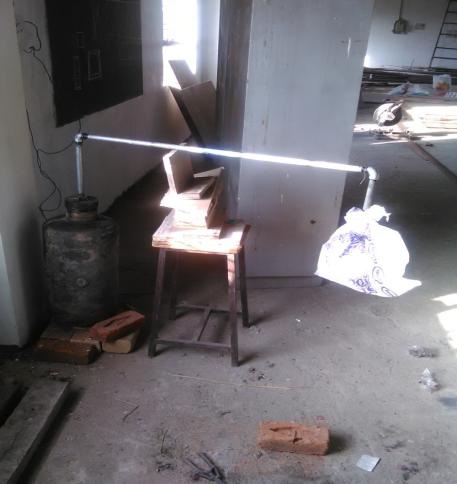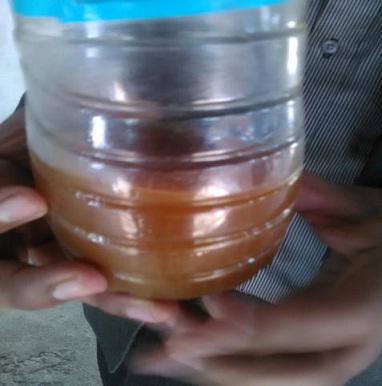





Published on Mar 01, 2025
Plastics have woven their way into our daily lives and now pose a tremendous threat to the environment. Over a 100million tones of plastics are produced annually worldwide, and the used products have become a common feature at overflowing bins and landfills. Though work has been done to make futuristic biodegradable plastics, there have not been many conclusive steps towards cleaning up the existing problem. Here, the process of converting waste plastic into value added fuels is explained as a viable solution for recycling of plastics.
Thus two universal problems such as problems of waste plastic and problems of fuel shortage are being tackled simultaneously. In this study, plastic wastes were used for the pyrolysis to get fuel oil that has the same physical properties as the fuels like petrol, diesel etc. Pyrolysis runs without oxygen and in high temperature of about 300°C which is why a reactor was fabricated to provide the required temperature for the reaction. The waste plastics are subjected to depolymerisation, pyrolysis, thermal cracking and distillation to obtain different value added fuels such as petrol, kerosene, and diesel, lube oil etc. Converting waste plastics into fuel hold great promise for both the environmental and economic scenarios.
Plastics are an integral part of our modern life and are used in almost all daily activities. Since plastics are synthesized from non-renewable sources and are generally not biodegradable, waste plastics are the cause of many of the serious environmental problems the world faces today. However, waste plastics can become a source of enormous energy with the correct treatment. In recent years, huge amounts of waste plastic are available in municipal solid waste (MSW) and many places. With an annual increase rate of approx 50%, in 1995, the production of plastic in the world had reached 150 million tons.
According to information the yield of waste plastic is 100 million tons. Various type waste plastic use now a days. Established technology can convert waste plastics into a renewable source of hydrocarbon fuel. This technology plans to acquire waste plastics from City / Local Municipalities and Recycling Facilities. For plastic fuel production purposes the plastics can be collected as commingled or separated into different categories. Another source of large amounts of waste plastic is floating on our oceans and seriously damaging the ecosystem and the environment.
Pyrolysis is the chemical decomposition of organic substances by heating the word is originally coined from the Greek-derived elements pyro "fire" and lysys "decomposition". Pyrolysis is usually the first chemical reaction that occurs in the burning of many solid organic fuels, cloth, like wood, and paper, and also of some kinds of plastic. Anhydrous Pyrolysis process can also be used to produce liquid fuel similar to diesel from plastic waste. Pyrolysis technology is thermal degradation process in the absence of oxygen. Plastic waste is treated in a cylindrical reactor at temperature of 300ºC – 350ºC.

Now a days plastics waste is very harmful to our nature also fo human beings .plastic is not easily decomposable its affect in fertilization ,atmosphere ,mainly affect on ozone layer so it is necessary to recycle these waste plastic into useful things .so we recycle this waste plastic into a useful fuel.



By heating the close combustion chamber with heater of two thousand Watt in a temperature range of 200 to 350 degree Celsius we get approx 560 ml fuel oil.By heating of combustion about 45 minutes the layer of oil appears on the water level. After two hour we get 500 ml of fuel oil. By using 10 ml of this fuel in 100 cc Bajaj Discover bike its runs bike one minute, at average speed of 45 km/h. it is concluded that the waste plastic Pyrolysis oil represents a good alternative fuel.
By using this fuel oil in 100 cc Bajaj Discover bike it increases effeciecy of bike by 15 to 20% as compared to petrol used in the bike. Engine fueled with waste plastic oil exhibits higher thermal efficiency. By comparing the density of HDPE oil with petrol its gives approximately same value. Also comparing the density of LDPE oil WITH diesel oil its gives approximately same value. It could be concluded, that thermal pyrolysis of plastic waste leads to the production of fuel oil, valuable resource recovery and reduction of waste problem. Thermal pyrolysis of waste plastic waste has also several advantages over other alternative recycling methods. It has been shown that the conversion at lower temperature in the presence of catalyst into liquid is a feasible process.
Raj Kumar Yadav, Prof. Yogesh Kumar Tembhurne
[1] Mani M., Subash C. and Nagarajan G., Performance emission and combustion characteristics of a DI diesel engine using waste plastic oil, Applied Thermal Engineering, 29,2738–2744 (2009).
[2] Murugan S., Ramaswamy M.C. and Nagarajan G., The use of tyre Pyrolysis oil in diesel engines, Waste Management, 28, (12),2743-2749 (2008)
[3] Rajesh Guntur and Deva Kumar M.L.S., Experimental evaluation of a diesel engine with blends of diesel-plastic Pyrolysis oil, International Journal of Engineering Science and Technology, 3(6), (2011)
[4] Agarwal Avinash Kumar, Biofuels (alcohols and biodiesel) applications as fuels internal combustion engines, Journal of Energy and Combustion Science, 33,233–71 (2007)